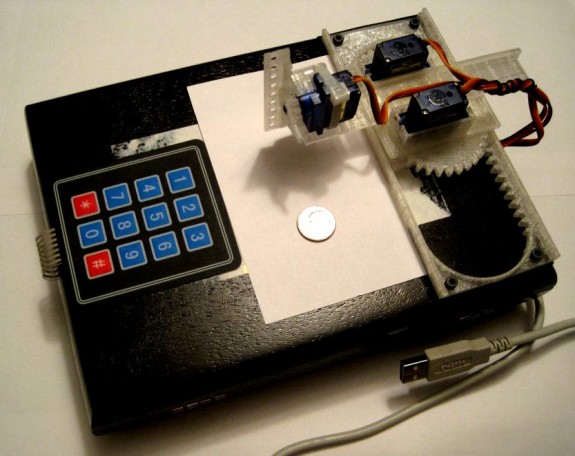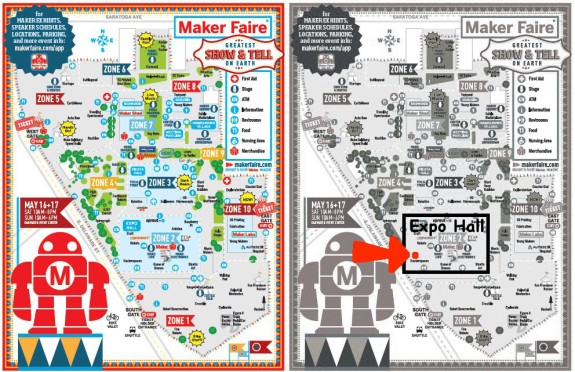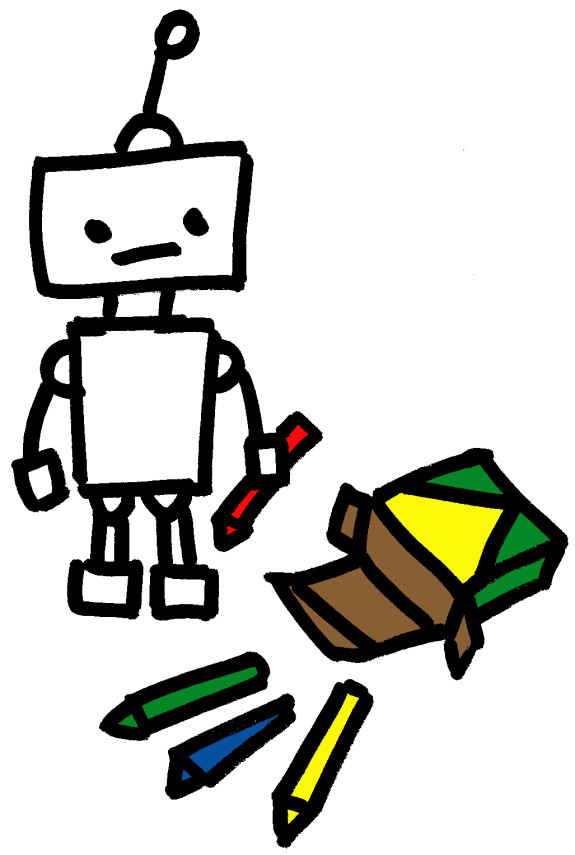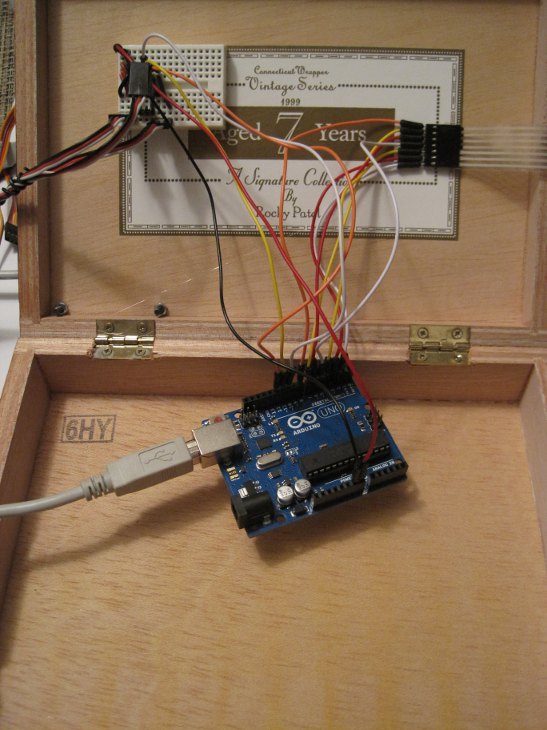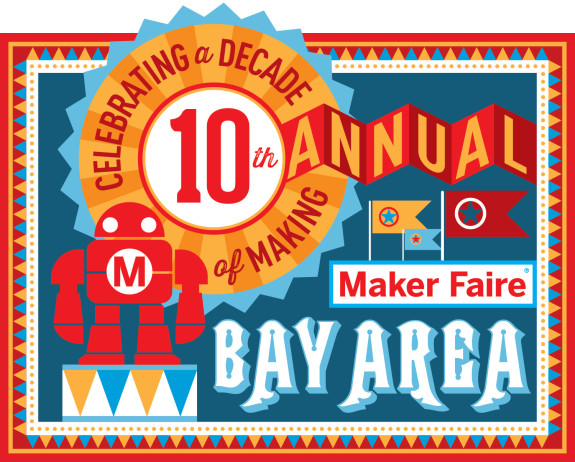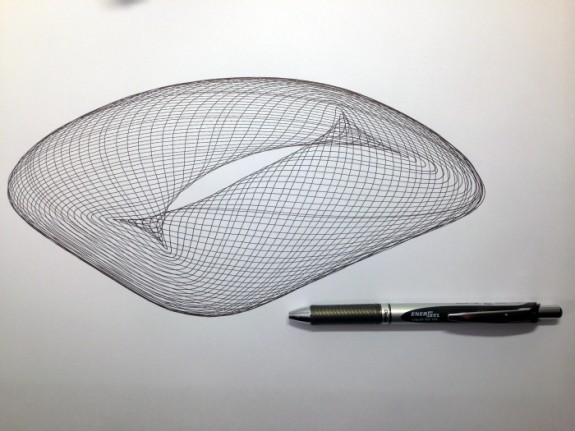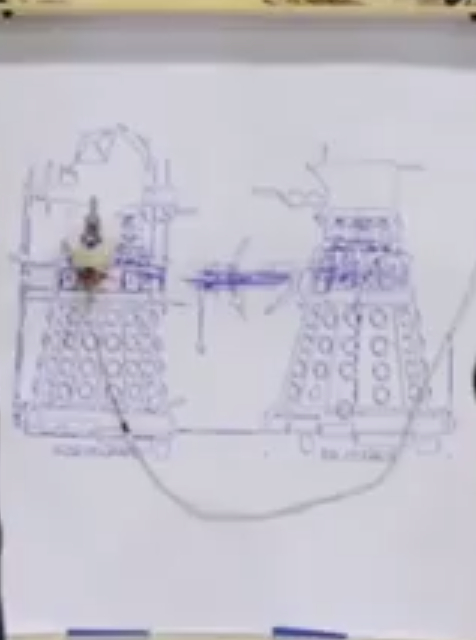This slideshow requires JavaScript.
If you missed the PlotterBot exhibit at Maker Faire Bay Area 2014, I’ve got you covered. Above are most of the drawings that were on display at my booth. A few of the drawings from 2013 were also on display.
This year I had the pen lift mechanism working and wanted to draw things that not only highlighted the robot’s ability, but that people would find recognizable and enjoyable. One of the best parts about drawing from SVG files, rather than high pixelated bitmap drawings as I did the year prior, is that it is much more entertaining to watch. When the robot is working its way in big arcs across a sheet of paper, the rocking movement of the pen holder is almost imperceptible from a distance. When drawing from an SVG file with lots of discrete regions, the robot will draw the lowest points first and work its way upwards. Although this can lead to an extremely inefficient path, the result is that the robot will tend to do a small speck in one area, then zoom to another region of the drawing, then back again.
While drawing SVG files can be relatively quick, a simple drawing taking only about two hours, the delays caused by performing pen lifts and pen drops and zipping between locations can make a drawing take several hours longer than one would anticipate. If the drawing includes shaded regions, it can take even longer.
There are several drawings which are, unfortunately, not pictured on this website – because I gave them away. One drawing, blueprints for a dalek in purple Sharpie, I gave away before I remembered to take a picture. A young gal, dressed as the eleventh Doctor, had stopped by the booth several times to fawn over the drawing. As it was the end of the fair, I just gave it away. I’m pretty sure it made her day. This is one drawing I look forward to doing again – this time even larger. Since it was drawn right-side up, it could only be drawn 30″ wide – the width of my paper roll. If I were to do it again, I would draw it on its side so it could be much much larger.
The last two drawings were for friends of mine were in need of banners for their booths. But, these are stories for another blog post.
